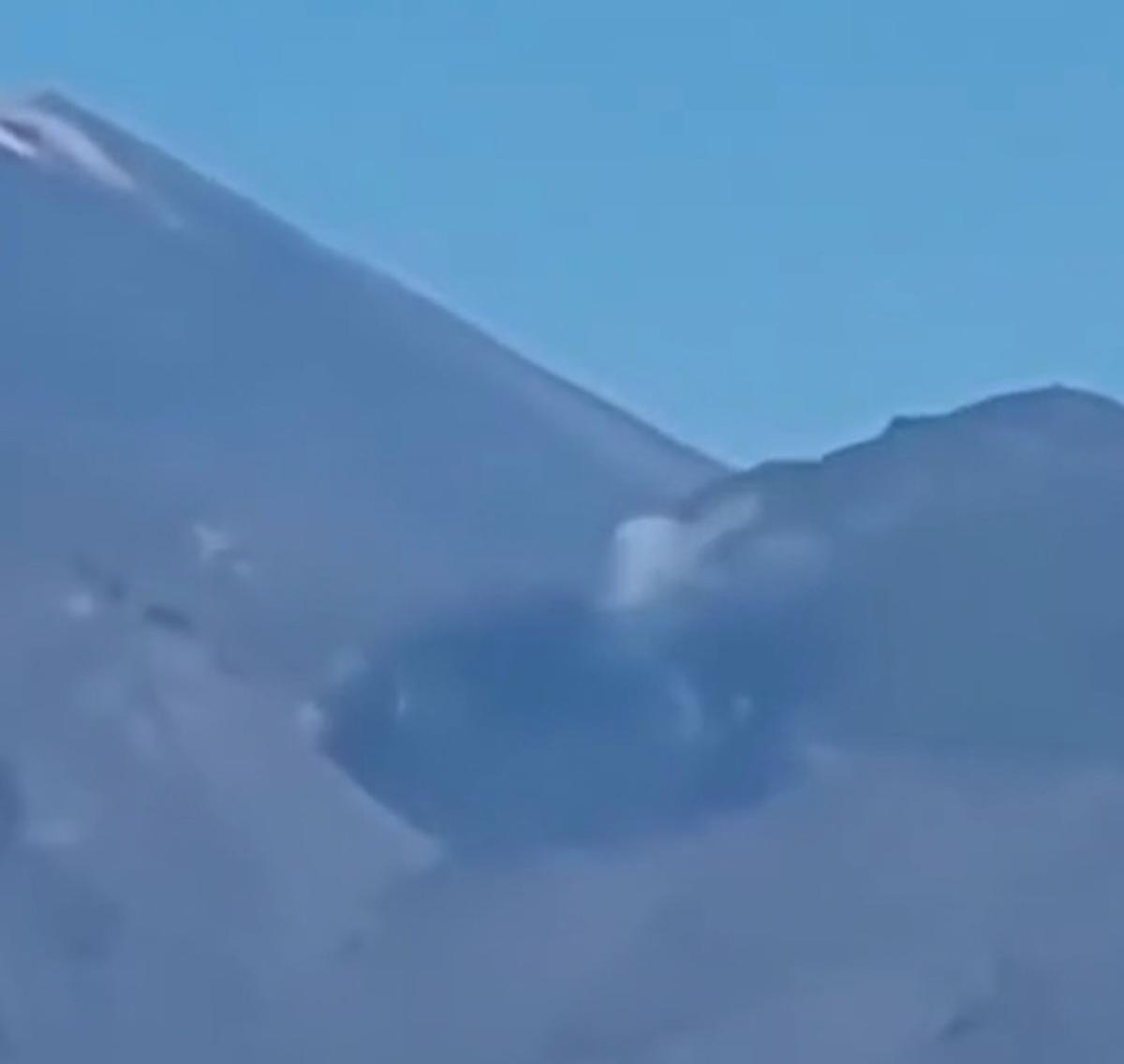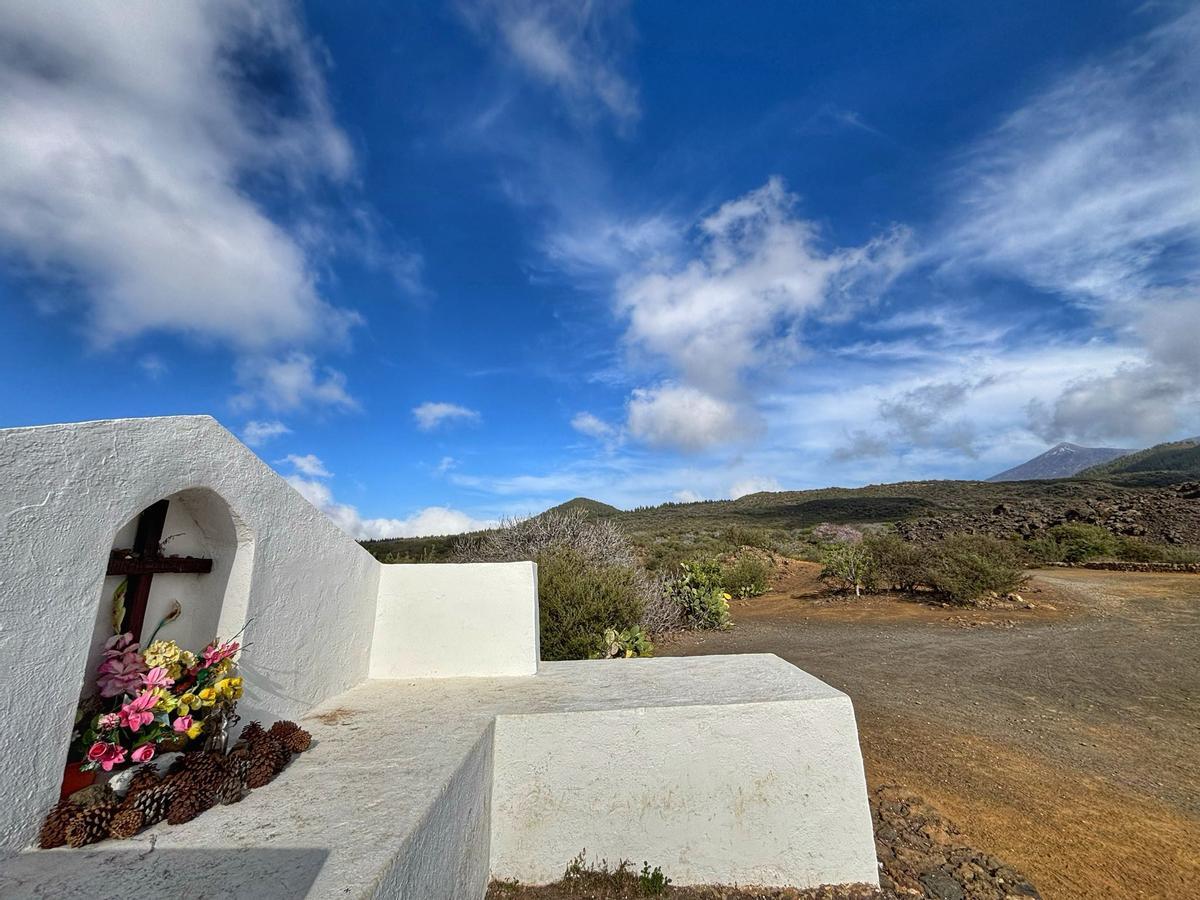A video circulating on social media and Wasap channels has raised concerns in Tenerife, with some individuals depicting it as early indications of a volcanic eruption at Teide. The footage, which has gone viral, appears to show what seems to be smoke in the Altos de Guía de Isora, beneath the Teide National Park. “There are numerous gases escaping next to the Teide,” states the videographer.
However, it is neither smoke, nor gas, nor anything associated with a pre-eruptive or volcanic process. Instead, it is merely dust produced by the construction activities taking place on the Tágara track in the elevated areas of Guía de Isora, situated in the south of Tenerife. This has been confirmed by the natural environment authorities of the Cabildo de Tenerife, who explain that these works have recently concluded and involved the improvement of this track within a fully forested area, which is the largest protected space in the Canary Islands.
Official sources advise caution to the residents of Tenerife regarding the dissemination of conclusions without verification linked to volcanic activity that may give rise to false information. This is particularly important during a period of heightened sensitivity surrounding such processes in Tenerife. It should be noted that on January 23, scientists monitoring volcanic risk in the Canary Islands reported having observed since 2023 a “slight” increase in CO2 emissions across several areas in Tenerife, including Teide, along with a “slight” land deformation; yet, they clarify that the likelihood of an eruption in the near or medium term has not escalated on this island.

Screenshot from the viral video concerning supposed gases at Teide which are actually dust from construction on a forest track. / Ed
Different from La Palma
These events, along with the increase in seismic activity detected in Tenerife since 2016, do not necessitate “at all” that the island escalates to yellow (alert) on the volcanic risk map, emphasised Itahiza Domínguez, the director of the National Geographic Institute (IGN) in the Canary Islands, in statements reported by the EFE agency.
“It is crucial for the public to recognise that this is not the scenario we experienced in La Palma prior to the eruption,” he stated, referring to the events of the Canary Islands (Pevolca).
The director of IGN in the Islands noted that basaltic eruptions, which are typical in the Canary Islands, are accompanied by “very strong” precursors, including noticeable seismicity with earthquakes felt by the populace and “very dense” swarms; as well as land deformation or gas emissions. He also made it explicitly clear that there is no risk of an eruption in the upcoming weeks or months and that both the IGN and the Volcanological Institute of the Canary Islands (Involcan), the two scientific bodies responsible for monitoring volcanic activity on the islands, maintain ongoing surveillance using an extensive array of instrumentation.
The last volcanic eruption in Tenerife took place in November 1909 (116 years ago) at El Chinyero, located near Teide. This volcano is part of the Special Chinyero Natural Reserve, a protected area that encompasses parts of the higher regions of the municipalities of Santiago del Teide, El Tanque, and Garachico.

Location where the principal flow of Chinyero lava in the elevated areas of Santiago del Teide was halted. / Dm
The Chinyero
The Chinyero eruption lasted hardly ten days and did not result in damage to the population; however, it was more explosive than anticipated, and ash spread over regions of the island currently inhabited by over 215,000 residents, where both of its airports are located.
Scientists are aware that the entire system encompassing the Teide volcano has erupted 13 times in the last 2,000 years, with the six most recent occurrences in the historical period (1492, 1704, 1706, 1798, and 1909), and they are confident that it remains active, exhibiting a slight increase in activity since 2016.
Consequently, Tenerife is equipped with a comprehensive Volcanic Earthquake System designed to respond swiftly when a new eruption is imminent, which also enables the detection of even the smallest earthquakes occurring on the island, particularly within Teide National Park.
















